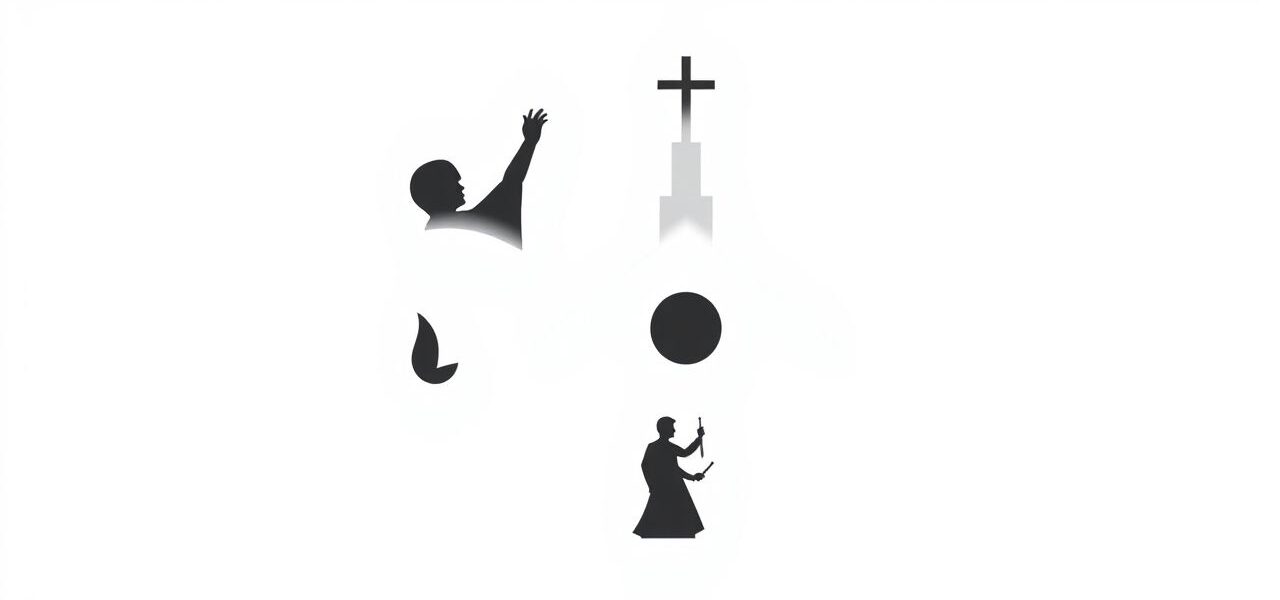The film begins with Mormon missionaries Sister Barnes and Sister Paxton going door to door to spread their faith. After a long and frustrating day, they arrive at the home of Mr. Reed, who initially seems welcoming and curious about their religion. As the conversation deepens, however, it becomes clear that Reed’s interest is not benign. The house turns into a psychological maze, blending theological debate with hidden dangers, forcing the missionaries into a deadly test of faith and survival.
Plot and Setup
Hereticopens with the two young missionaries arriving at Reed’s door during a looming storm. He assures them his wife is nearby baking a pie, which initially reassures them, but soon unravels as Reed’s facade. He traps them inside and begins probing their beliefs through intellectual puzzles, theological arguments, and cunning manipulation. What starts as a discussion quickly turns into a catandmouse game.
Character Dynamics
- Mr. Reed(Hugh Grant): A charming yet sinister host who challenges religious convictions with dark intellectualism.
- Sister Barnes(Sophie Thatcher): The more experienced missionary, critically thinking and steadily questioning Reed’s logic.
- Sister Paxton(Chloe East): Younger and more earnest in faith, increasingly shaken by Reed’s psychological tactics.
The first half of the film is rich in dialogue as Reed systematically dismantles religious narratives and forces the young women to choose between belief and disbelief. He uses tools such as Monopoly boards, religious comparisons, and cultural references to illustrate his point: that control is the ultimate religion.
Thematic Exploration
The story explores philosophical questions: What is faith? Is belief a form of control? Who truly holds power over others? Reed posits that organized religion is fundamentally about power and manipulation rather than spiritual truth. His views create suspense by challenging the missionaries’ convictions in intellectually unsettling ways.
Critics praised the film for its thoughtprovoking nature. RogerEbert.com described it as a study in not just what stories we’re told but who has been telling them to us
Psychological Horror Over Jump Scares
Instead of relying on jump scares or gore, the film builds dread through tension and subtext. Reddit users described it as psychologically tortuous rather than conventionally frightening, with few jump scares and minimal violence
Second Act Tensions
As the missionaries are forced further into Reed’s labyrinthine house, the tone shifts. Hidden traps, shifting passageways, and increasing violence lead to physical peril. Sister Paxton is led downward into a hall of captives other women Reed has manipulated. Caged and broken, their presence illustrates the horror of ideological captivity.
Pilot spoilers reveal Reed’s belief that control itself is the only true religion. He places the women in cages to demonstrate dominance over body and mind
Climactic Confrontation and Resolution
In the climax, Reed’s facade gives way to outright violence. Paxton confronts him, stabs him, and in her desperation, prays rather than retaliates a moment that unsettles the dynamic of control. Miraculously, Sister Barnes reappears and intervenes to kill Reed, allowing Paxton to escape through a window into the snowy outside world.
The film ends on an ambiguous note with a butterfly landing on Paxton’s hand a symbol of transformation or hope. The sudden appearance (or illusion) of the butterfly hints at spiritual resonance beyond the immediate horrors they survived
Performances and Cinematic Style
The film marks a striking transformation for Hugh Grant, who sheds his romantic-comedy persona to play a cerebral yet terrifying antagonist. Critics rated his performance highly, calling him infectious in his dark role
- Sophie Thatcherportrays Barnes with steady skepticism and intelligence.
- Chloe Eastbrings vulnerability and emotional realism to Paxton’s journey.
The film uses tight, claustrophobic framing and shifting lighting to heighten psychological tension. Cinematographer Chung Chung-hoon captures the unsettling energy of Reed’s home its hidden depths and shifting moods mirror the characters’ turmoil
Reception and Legacy
Hereticpremiered at the Toronto International Film Festival in September 2024 and was released in November. It earned positive reviews, with a high Rotten Tomatoes score and commendation for its blend of horror and philosophical debate
Reviewers noted its ambition and intellectual edge. The Times of India called it a bold exploration of faith and fear that stands out in modern horror
Criticisms
Some viewers felt the film lost momentum in its second half, where thematic dialogue gave way to more conventional horror elements. Critics pointed out pacing issues and narrative complexity that overshadowed some of its early promise
However, even when the film diverged into more graphic territory, its ideas about control, belief, and agency remained compelling.
Hereticis a horrorthriller that challenges viewers not just with visual scares but with deep questions about religion, belief systems, and power. It follows two young missionaries who are drawn into a theological and psychological trap by a diabolical host. As their faith is interrogated and their choices evaporate into manipulation, the film becomes a study in intellectual control and ideological captivity.
Boasting strong performances especially from Hugh Grant and a thoughtful production design anchored by tension and dialogue,Hereticoffers a fresh, unsettling take on genre horror. It may falter in pacing, but its themes linger long after the credits roll. For those interested in religious horror that explores manipulation, belief, and what lies behind spiritual obedience,Hereticis a memorable, provocative experience.
